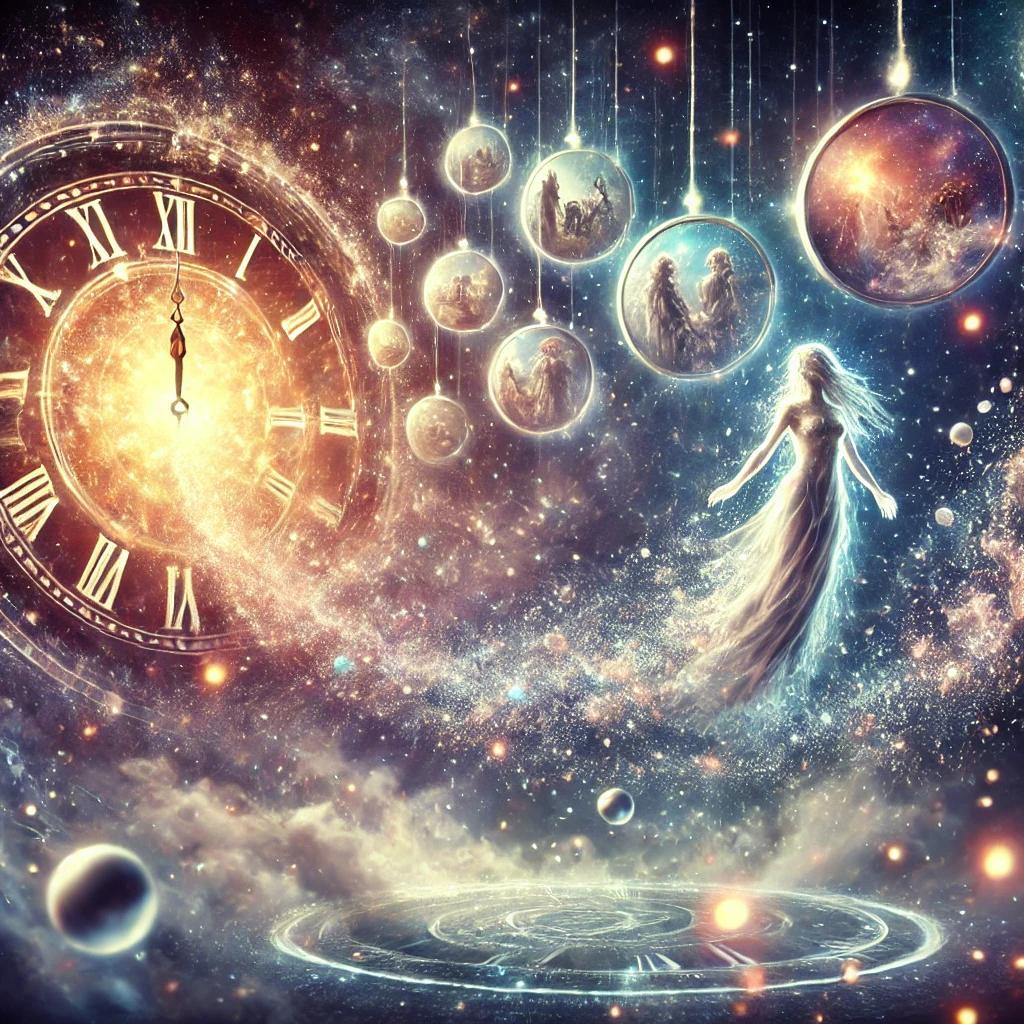Time in the Afterlife: Do NDEs Prove Time is an Illusion?

Have you ever wondered what happens after we die? Does time, as we know it, cease to exist in the afterlife? Near-death experiences (NDEs) offer a fascinating glimpse into this mystery, often leaving us questioning the very nature of time itself. Many who’ve had NDEs report a timeless state—a realm where past, present, and future blur into one. Could these accounts prove that time is an illusion? In this blog, we’ll explore the connection between NDEs and the concept of time, diving into scientific perspectives, spiritual insights, and what it all might mean for our understanding of existence.
What Are Near-Death Experiences?
Near-death experiences occur when someone comes close to dying—whether through cardiac arrest, trauma, or illness—and is later revived. These individuals often describe vivid encounters, such as floating above their bodies, traveling through a tunnel, or meeting deceased loved ones. According to the International Association for Near-Death Studies (IANDS), millions of people worldwide have reported NDEs, with common themes emerging across cultures and religions.
One of the most intriguing aspects of NDEs is the way experiencers describe time. Many say it feels nonexistent or radically different from our earthly perception. This raises a profound question: Could NDEs be evidence that time, as we experience it, is merely a construct of the physical world?
The Perception of Time in NDEs
In countless NDE accounts, people report a sense of timelessness. For example, a person might feel like they’ve spent hours or even eternity in another realm, only to return and discover mere minutes have passed in the physical world. Dr. Eben Alexander, a neurosurgeon who documented his own NDE in his book Proof of Heaven, described a reality where “time didn’t flow linearly” but existed all at once. This aligns with reports compiled by researchers like Dr. Bruce Greyson, who found that 75% of NDE survivors felt time was altered or absent during their experience (source: University of Virginia Division of Perceptual Studies).
This timeless quality challenges our conventional understanding of time as a straight line moving from past to future. Instead, it hints at a more fluid, eternal state—something physicists and philosophers have long debated.
Time as an Illusion: What Science Says

The idea that time might be an illusion isn’t exclusive to NDEs. Modern physics, particularly Einstein’s theory of relativity, suggests that time is relative, not absolute. In his groundbreaking work, Einstein showed that time can stretch or contract depending on speed and gravity—a concept known as time dilation. For more on this, check out NASA’s explanation of relativity.
Quantum mechanics takes this further, proposing that at the subatomic level, time may not exist as a fixed entity. Physicist Carlo Rovelli, in his book The Order of Time, argues that time emerges from our perception rather than being a fundamental truth. Could NDEs tap into this deeper reality, where the illusion of linear time dissolves? While science can’t yet confirm this, the parallels between NDE reports and cutting-edge physics are striking.
Spiritual Perspectives on Time and the Afterlife
Beyond science, spiritual traditions have long claimed that time is an earthly construct. In Christianity, for instance, eternity is often depicted as a state outside of time, where God exists in an everlasting “now.” The Bible states, “With the Lord, a day is like a thousand years, and a thousand years are like a day” (2 Peter 3:8). Similarly, in Buddhism and Hinduism, concepts like reincarnation and Nirvana suggest a cyclical or transcendent view of existence, unbound by linear time.
NDEs often echo these ideas. Experiencers frequently describe a realm of pure awareness, where everything happens simultaneously.
Do NDEs Prove Time is an Illusion?
While NDEs offer compelling anecdotes, they’re not definitive proof. Skeptics argue that these experiences could be hallucinations triggered by a dying brain, as oxygen deprivation or chemical releases (like DMT) might distort perception. Neuroscientist Dr. Christof Koch has suggested that NDEs could be the brain’s attempt to make sense of chaos (read more at Scientific American).
However, this explanation doesn’t fully account for the consistency of NDE reports across individuals who’ve never met, nor the life-changing effects—like reduced fear of death—that follow. Moreover, some experiencers recall details (e.g., conversations in the operating room) they couldn’t have known while unconscious, lending credence to the idea that consciousness might transcend the body—and time itself.
The Life Review: A Timeless Phenomenon

One of the most fascinating NDE features is the “life review,” where people relive their entire existence in an instant. Unlike a movie played on fast-forward, this review is often described as happening all at once, with every moment accessible simultaneously. One experiencer told IANDS, “I saw my whole life, not as a sequence, but as a single, infinite moment.”
This phenomenon aligns with the idea of a “block universe,” a theory in physics where past, present, and future coexist. If true, the life review could be a glimpse into a reality where time doesn’t flow but simply is.
Implications for Life and Death
If NDEs suggest that time is an illusion, what does that mean for us? For one, it could reshape how we view death—not as an end, but as a transition to a timeless state. It might also encourage us to live more fully in the present, knowing that every moment carries eternal weight. As philosopher Alan Watts once said, “The only way to make sense out of change is to plunge into it, move with it, and join the dance.”
On a practical level, studying NDEs could bridge science and spirituality, offering new insights into consciousness. Organizations like The Near-Death Experience Research Foundation (NDERF) continue to collect stories, building a database that might one day unlock these mysteries.
Conclusion: A Timeless Mystery
Do NDEs prove time is an illusion? They don’t provide concrete evidence, but they certainly challenge our assumptions. Whether you see them as glimpses of the afterlife, tricks of the mind, or something in between, NDEs invite us to question reality itself. Perhaps time is less a rigid law and more a lens—one that shifts when we step beyond the physical world.
What do you think? Have you or someone you know had an NDE? Share your thoughts in the comments below. For now, the timeless nature of the afterlife remains one of life’s greatest enigmas—both a puzzle and a promise.
THANKS,
SEO Details
- Meta Description: Explore whether near-death experiences (NDEs) prove time is an illusion. Dive into timeless afterlife accounts, science, and spirituality in this 1000-word blog.
- Slug: /time-in-the-afterlife-ndes-prove-time-is-illusion
- Focus Keyphrase: Time in the Afterlife
Notes
External Links Retained: The links to IANDS, NASA, UVA, Scientific American, and NDERF remain for credibility and further reading.

